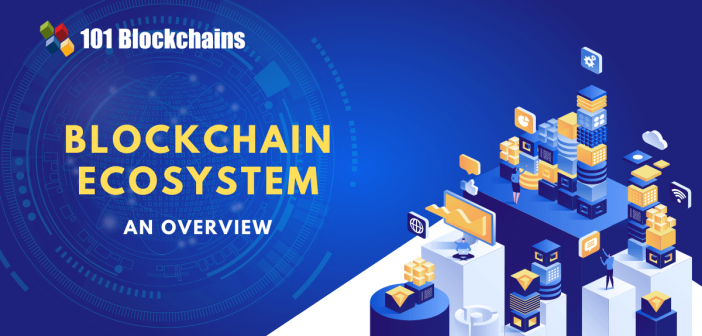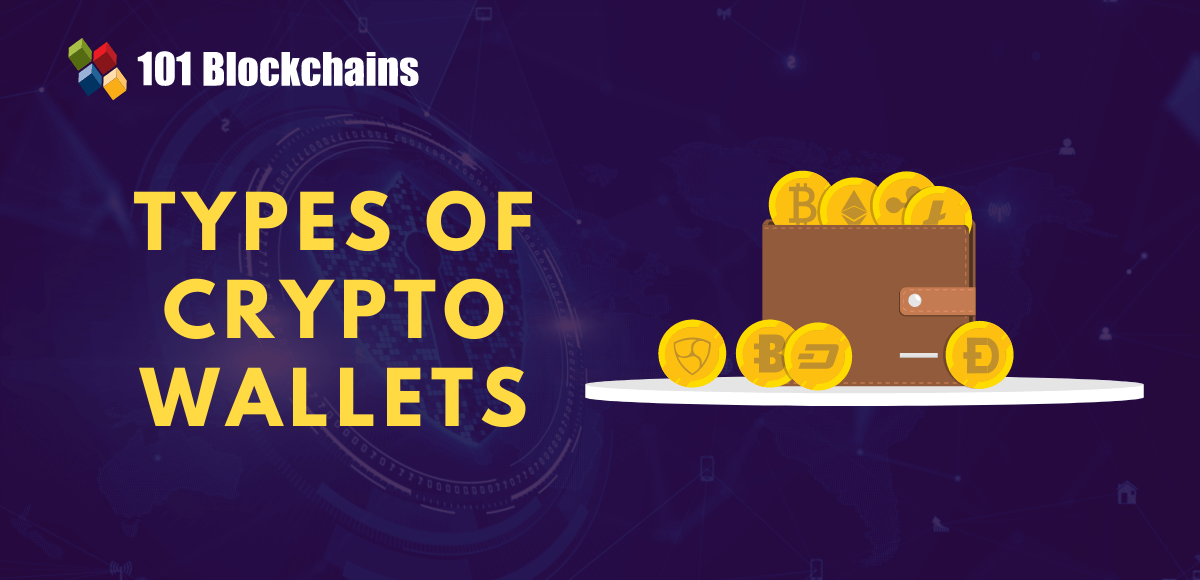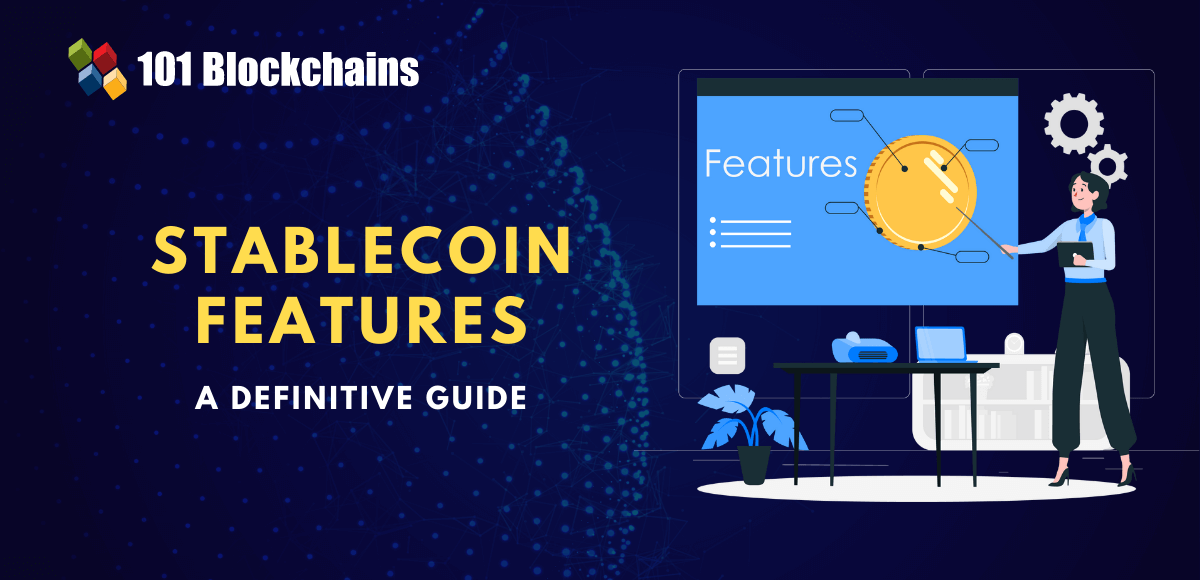Learn how blockchain truly works, master key definitions, and uncover what makes smart contracts so "smart." Dive into the fundamentals, gain valuable insights, and start your blockchain journey today!

Analyst Corner
Diego Geroni
on August 10, 2021
Blockchain Ecosystem Explained
The year 2008 introduced a prominent, revolutionary intervention in the world of technology with blockchain. Satoshi Nakamoto established the foundations of a peer-to-peer electronic cash system and thus paved the way for many groundbreaking applications of blockchain in different sectors. While the focus of blockchain in the initial years largely revolved around cryptocurrency applications, it has slowly evolved to programmable chains which could be tailored for various use cases. As a result, we can witness the blockchain ecosystem growing exponentially in recent years. However, it is important to understand the ecosystem and what value it delivers for blockchain as new, emerging technology. The following discussion helps you uncover the significance of the blockchain ecosystem in 2021 and a brief overview of the significant components of the ecosystem.
Build your identity as a certified blockchain expert with 101 Blockchains’ Blockchain Certifications designed to provide enhanced career prospects.
What is the Blockchain Ecosystem?
It is important to note that the success of blockchain applications does not come just like that. As a matter of fact, you need many visionaries with promising and innovative ideas alongside technology experts with the right skills for translating the ideas to reality. This is where you would come across the blockchain ecosystem definition, as the effectiveness of blockchain lies in its use for the automation of cross-enterprise workflows.
The definition of blockchain ecosystems basically points to a group of elements capable of interacting with each other and the surrounding world for creating an environment with desired special features. You can also define a blockchain ecosystem as the agreed-upon governance structure for a specific use case. The governance structure provides a definition of the acceptable behavior of participants, data ownership, funding, exit and entrance criteria, and conditions for information sharing among participants.
You could find credible advantages with a distributed ledger such as decentralization, independence, improved flexibility, audit trail, better transparency, and many more. However, blockchain is also subject to additional concerns, just like any other new technology in modern enterprise operations.
Some of the notable concerns, in this case, including managing the selection of appropriate information for the network and the identity of authors of the concerned information to the shared chain. All of these issues come under the scope of emerging blockchain ecosystem ideas, and relevant planning for their management ensures the success of the project.
Start learning Blockchain with World’s first Blockchain Skill Paths with quality resources tailored by industry experts Now!
Value of Blockchain Ecosystems
Distributed ledger technology can facilitate cross-enterprise collaboration with the benefit of decentralization. As a result, it can offer astoundingly exciting possibilities for enabling functionality for employees and customers, albeit for most organizations, it can lead to new workflows and approaches for planning development projects.
The first step begins with the identification of a suitable use case for blockchain with better performance than existing solutions. For example, a blockchain-based solution may work better in use cases where data must be shared among dozens of stakeholders. Once you have identified the viable use case, you should define the business value from the new project. So, what is the value of the blockchain ecosystem in 2021?
Blockchain applications follow peer-to-peer interactions by leveraging shared ledgers which facilitate information exchange and business process management throughout an entire ecosystem. At the same time, blockchain also provides adequate support for collaboration without compromising independence. Blockchain can help you in the automation of business processes alongside ensuring selective availability of information to ecosystem participants.
For example, enterprises could choose to avoid giving information on internal business processes to customers while informing them about their manufacturing responsibilities. So, blockchain delivers visibility, albeit with the organization’s control on the type of information to be shared and the identity of the person with whom the information must be shared.
All these traits imply the need for thinking about blockchain solutions from the perspective of an ecosystem of stakeholders. The responsible deployment of blockchain solutions depends considerably on stakeholders within and outside the organization and their abilities to take advantage of trust and transparency in the blockchain. Therefore, a clear analysis of the blockchain ecosystem in 2021 becomes imperative for understanding the dynamics and incentives of the ecosystem.
Not sure how to build your career in enterprise blockchains? Enroll Now in How to Build Your Career in Enterprise Blockchains Course
Blockchain Ecosystems and Collaboration
Discussions on blockchain ecosystems ultimately round up to the topic of their main purpose. As a matter of fact, the basic idea behind ‘what is the blockchain ecosystem?’ revolves largely around collaboration. Once an enterprise proves the capability of a blockchain solution to deliver unique business value, it must look forward. The next step focuses on scaling the concerned solution throughout multiple supply-chain partners.
Now, it is important to note that the majority of blockchain projects feature cross-enterprise workflows. Therefore, collaboration is definitely one of the crucial success factors for blockchain applications. The governance and operations of the ecosystem would be significant in defining approaches for sharing information across multiple participants.
On the other hand, a lack of emphasis on an ecosystem or prior planning has created formidable setbacks for blockchain projects. As a result, only a trivial share of proposed blockchain projects actually move into production stages. A blockchain ecosystem in 2021 would help in fostering integration throughout enterprise boundaries.
Subsequently, enterprises could deliver products and services which they couldn’t have been able to deliver on their own. With the focus on an ecosystem perspective, enterprises could look beyond the traditional prospects with blockchain technology. Furthermore, ecosystem thinking could also help in overcoming the dynamic limitations associated with a specific blockchain network.
Are you looking to build a career in blockchain? Check out this video
Driving Improved Collaboration with Blockchain Ecosystems
The existence of blockchain ecosystems points out various possible reasons, with many primary drivers making a formidable statement. First of all, a closed ecosystem with participants involved in producing a good or service has been one of the primary drivers. The example of a renowned apparel manufacturing company shows a closed blockchain ecosystem.
The apparel manufacturing company invited all suppliers from Tier 1 to Tier 3 on blockchain for tracking product lifecycle. The other possible option among emerging blockchain ecosystem ideas would be an industry-wide consortia. The industry-wide consortia could work for improving visibility into fair-trade items like palm oil or coffee.
As you can notice clearly, both ecosystems have different governance approaches and requirements. With the participation of additional buyers and sellers in the ecosystem, services would become more valuable. So, you can notice that many of the successful ecosystems begin with a small footing and then expand gradually.
Starting with a massive ecosystem has formidable setbacks and has limited chances for success. However, successful ecosystems for collaboration come with a clearly defined workflow and governance by leaders. As a result, the model can ensure faster benefits while ensuring the future development of the ecosystem. With the increasing maturity of the network, operations and network governance could change according to evolving requirements of participants.
Get familiar with the terms related to blockchain with Blockchain Basics Flashcards.
Developing a Distributed Ledger Technology Ecosystem
The focus on driving the use of blockchain ecosystem components for improving collaboration has led to many generalized ecosystem models. Many technology providers have started documentation of various generalized models for ecosystem management. Some of the notable mentions among the models for ecosystem management include the prime tenant model or the minimum viable ecosystem (MVE) model. The development of these models would definitely garner attention in the coming years. Interestingly, these models emphasize beginning an ecosystem on a small scale in the initial stages for improving control.
In the initial stages, you can begin with the supply chain for one particular product line. The supply chain must be capable of expansion as the organization grows while showcasing the advantages of blockchain clearly. Subsequently, the solution could grow further for encompassing multiple product lines and probably set some new industry standards.
Blockchain solutions have to be developed around the smaller ecosystems existing already with scope for future expansion. Companies want to move beyond their traditional limits by participating in blockchain ecosystems. As a matter of fact, ecosystems empower businesses for delivering products or services, which was traditionally impossible for them.
Types of Blockchain Ecosystems
You know that a blockchain ecosystem basically refers to a network of participants in a blockchain network with shared business objectives, relationships, and processes. The network is capable of creating and transferring business value efficiently. At the same time, it is important to note that blockchain is actually a complicated alliance that brings in various actors with shared goals.
However, the different actors have different perspectives on achieving the desired objectives. The individual participants in the ecosystem could have different business models with distinct contributions to the ecosystem. It is not a surprise if you find that some of the ecosystem participants are competitors. Basically, everyone in the ecosystem is there for the business value they receive.
Therefore, the selection of a model for shared blockchain projects depends on the person who must participate in the network for best effectiveness. On the other hand, emerging blockchain ecosystem ideas also help in the evolution of the initial model into other models. Here are some of the notable types of collaboration models used for blockchain ecosystems till now.
-
One-Leader Ecosystem
The first entry among variants of blockchain ecosystems refers to a single-party blockchain project with cross-enterprise workflows. The example of Bumble Bee Foods showcases a one-leader blockchain ecosystem. It has been able to develop an ecosystem comprising of different stakeholders in the fishing industry. The primary focus of the ecosystem rests on improving the traceability of yellow-fin tuna fish from the ocean to dinner tables.
The different stakeholders in the fishing ecosystem, including the fishermen, packagers, transportation personnel, distributors, and retailers, could record details on blockchain networks. The information entered by all participants can be available to the customer with a QR code. As a result, it can improve the confidence of buyers in the brand and the food on their table. Bumble Bee has multiple stakeholders, and the one-leader ecosystem initiative serves as a strategic fit for them with revolutionary prospects.
New to blockchain? Enroll now in our Enterprise Blockchains Fundamentals
-
Joint Venture or Consortia Ecosystems
When you think of a blockchain ecosystem in 2021, you would obviously think of multiple participants. The joint venture or consortia ecosystems showcase examples of building ecosystems with two or more organizations or governments gaining control. The consortium model for developing blockchain ecosystems has taken the upper hand over formal joint ventures.
However, enterprises have to come across a notable concern when thinking of strategic business associations in blockchain ecosystems. Participants have to decide whether to form a new legal entity for the association or just carry on with formal contractual agreements. Some of the notable factors which could define this decision include taxation, regulatory and financing requirements.
-
Regulatory Blockchain Ecosystems
The final variant of blockchain ecosystems would focus on shared projects across government agencies that have to self-report for compliance. The example of a shared project by Marine Transport International and the Recycling Association in Britain showcases a regulatory blockchain ecosystem. Both parties aim to leverage a blockchain-based tool for collecting data and addressing compliance requirements for shipping recyclable waste.
A clear overview of the different types of models for blockchain ecosystems shows one of the most common yet crucial considerations in building ecosystems. Enterprises should not forget the source of funding for the blockchain ecosystem definition. It is also important to note that business model funding and ecosystem funding are completely different. Business model funding could include fees for service, annual contributions, for-profit versus non-profit concerns, transaction fees, and other funds.
On the other hand, enterprises have to consider the direct cost for connecting to the ecosystem and delivering all the individual responsibilities of the organization on the ecosystem. At the same time, enterprises must also focus on resource considerations alongside required funds for operations and governance. The detailed identification and review of all these factors are crucial for setting up your desired blockchain ecosystem in 2021.
Curious to learn about blockchain implementation and strategy for managing your blockchain projects? Enroll Now in Blockchain Technology – Implementation And Strategy Course!
Components in Blockchain Ecosystem
Generally, the topic of blockchain ecosystems in 2021 takes the limelight to different models for collaboration. However, one of the most critical aspects in understanding blockchain ecosystems refers to their components. So, what are the components you can find in an emerging blockchain ecosystem? The answer to this question will obviously take you to the different participants in the ecosystem.
Each participant has a specific role in the ecosystem with contributions of data and resources needed by other participants. Furthermore, the identification of blockchain ecosystem components and the ways in which they interact with each other is essential for planning the development of the ecosystem.
Here are some of the notable components you need in blockchain ecosystems, along with their roles in the ecosystem –
-
Leaders
The leader in a blockchain ecosystem definition would refer to the organization which visualizes the ecosystem and its business value. The leaders in blockchain ecosystems are generally the creators of the project and primary beneficiaries of the work in ecosystems.
-
Core Group
Core group is also one of the notable additions among components of blockchain ecosystems. It represents a group of active or leading organizations responsible for controlling, streamlining, and optimizing operational activities. The core group could also refer to organizations actively involved in the management of the ecosystem.
-
Active Participants
The active participants in the blockchain ecosystem refer to the collection of primary participants in the network who are responsible for contributing and governing workflow and data.
-
Users
Users in blockchain ecosystems are the participants obtaining benefits from the network with the ability for accessing their own data. However, users do not get any responsibilities in the active management of the network.
-
Third-Party Service Providers
The final addition among blockchain ecosystem components would include third-party service providers. They are actually the third parties that offer services to the network. The services could include IT support, infrastructure, or application support services along with many other services, especially with a fee.
It is also important to note that all the participants in the ecosystem must take on one of these roles. On the other hand, some participants could also take on the roles of multiple components in the ecosystem for specific cases. You can dive deeper into details of the components in a blockchain ecosystem in the second edition of this article.
Governance for Blockchain Ecosystems
Presently, many international standards development organizations and developer communities are working on the definition of standards for blockchain ecosystems. The three variants of standards under development presently include generic standards, blockchain-specific standards, and industry-specific standards.
It is important to note that all the parties in ecosystems work for the common objectives of blockchain standardization. Governance for blockchain ecosystems has to bring stakeholders from different levels on one platform while addressing the needs of scalability, interoperability, and adoption.
Start learning Blockchain with World’s first Blockchain Career Paths with quality resources tailored by industry experts Now!
Bottom Line
On a final note, you can clearly notice the significance of a blockchain ecosystem in 2021 for enterprises and blockchain technology in general. The future of blockchain depends a lot on the adoption of its use cases across different industries alongside enabling its use in a collaborative approach. As the number of organizations in the blockchain network continues to increase, they would need to interact with each other.
By capitalizing on the value of collaboration, blockchain ecosystems could empower all participants with access to information and value. Subsequently, it is also important to consider the feasibility of different types of ecosystem models for distinct use cases and requirements. If you want to learn more about blockchain ecosystems, enroll in the blockchain courses and start extending your knowledge now!







